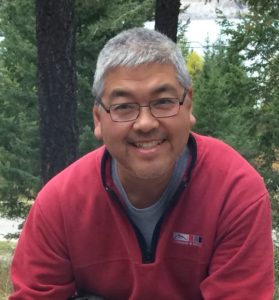Come join us at WURST for our last Nerd Nite of the season! This Season Finale is sure to be a cliff hanger…
When: Thursday, June 14th , 2018
Where: WURST (2437 4 St SW)
Tickets: Sold out! Wait list here
This is an 18+ event.
SPEAKERS
Everything you never knew you wanted to know about radon, gas, radiation and you
Dr. Aaron Goodarzi, University of Calgary, Canada Research Chair for Radiation Exposure Disease

Most of us have learned a degree of ‘fear’ surrounding (ionizing) radiation and the diseases connected to exposure, typically from popular culture, more spectacular historical events or word of mouth. However, exactly *why* we should be concerned, and also the surprising nature of the radiation sources that we should and also should not be worried about, is often missed from this conversation. In this evenings talk, you will learn the answers to all of these questions, as well as how scientists are figuring out who are the hidden superheroes amongst us, how studying the air of basements can help us colonize space and why working in a nuclear power plant can sometimes save your life.
Colours of the Brain
Dave Siever, CEO of Mind Alive Inc.
Once upon a time EEGs could only show squiggly lines that a researcher or clinician “oohed and aahed” at, not knowing quite what to make of these elusive & exciting brain wave events. However, with the advent of the quantification of brain wave activity over time, computer algorithms allowed researchers and clinicians to view beautiful and colorful images of brain activity that goes far beyond what can be gleaned from squiggly lines. This technique is termed quantified EEG or qEEG. QEEG enables us the ability to identify and treat a wide variety of brain/behavioral conditions including depression, several types of anxiety, OCD, ADD, ADHD, dementia, brain injuries from hits to the head, viral infections, strokes and more.
The Chemistry of the World’s Smallest Sponges
George Shimizu, University of Calgary. Co-Founder, ZoraMat Solutions Inc.

Many global challenges, from desalinating water to reducing greenhouse gas emissions, come down to bringing about some form of separation in an energy efficient manner. Our research concerns making new solid materials with regular pores and channels on the nanometer scale. On this scale, the cavities are on the order of individual molecules and the ability to separate targets becomes very selective. In this talk I will present some of the techniques we use to prove the structure of materials and how they work followed by some of the global challenges where a better means of separating molecules is needed. Finally, I will mention some of our very successful work on using these little molecular sponges to selectively and efficiently remove carbon dioxide from gas streams.
